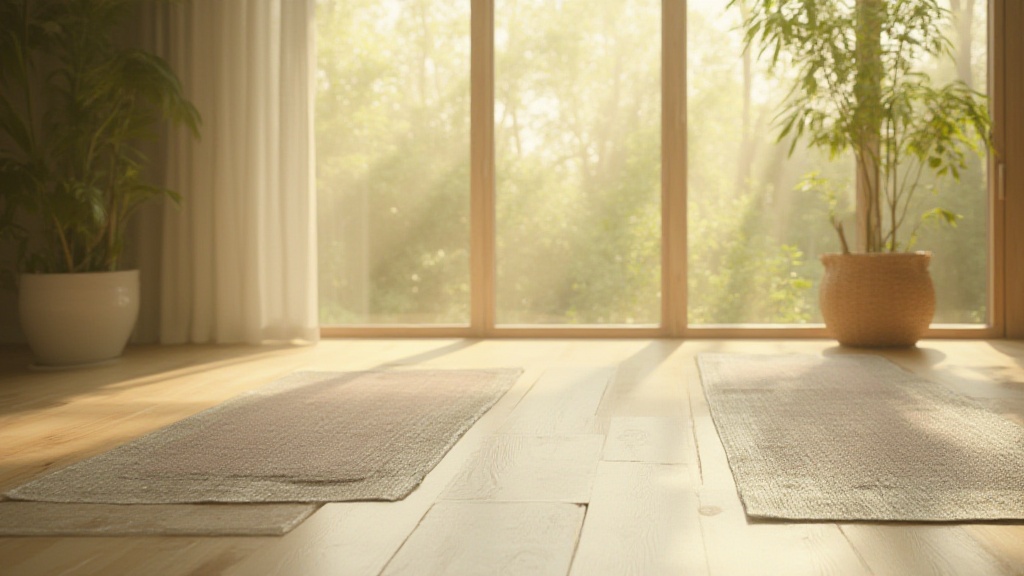
Maintaining mobility is essential for seniors to live independently and enjoy daily activities. Research indicates that nearly 30% of older adults suffer from mobility issues primarily due to a lack of flexibility.
Flexibility exercises for seniors play a pivotal role in enhancing the range of motion, thereby improving overall mobility.
Regular participation in stretching routines can help prevent injuries while promoting better joint health.
Simple yet effective mobility exercises can be integrated into daily routines, ensuring that seniors remain active and engaged. Prioritizing these exercises is necessary to maintain a healthy lifestyle and enhance everyday functioning.
Benefits Of Flexibility For Seniors
Flexibility significantly influences overall wellness, enhancing daily functioning and mobility.
Improved flexibility can lead to decreased chronic pain, making everyday activities more manageable for seniors. Incorporating gentle stretching into morning routines not only promotes physical health but also contributes to emotional wellbeing.
Regular flexibility exercises support joint mobility, allowing for safer movement and reduced risk of injury.
Health Benefits of Flexibility
Senior wellness is closely tied to flexibility.
Enhanced flexibility improves muscle relaxation, which can alleviate muscle stiffness and discomfort.
Implementing flexibility exercises can foster better body alignment, ultimately enhancing quality of life.
Daily Stretching Suggestions
Suggested daily stretches can be easily performed at home and integrated into a home workout program. These include:
- Neck stretches to relieve tension.
- Shoulder rolls for upper body mobility.
- Seated hamstring stretches to enhance leg flexibility.
- Calf stretches against a wall for lower body mobility.
Engaging in these simple stretches can significantly improve a senior’s overall mobility, facilitating smoother participation in everyday activities and promoting active aging. Regularly practicing these exercises contributes to better balance activities, fall prevention, and enhanced core stability.
Conclusion
Incorporating flexibility exercises into daily routines helps foster a lifestyle of active engagement, supporting mental wellbeing alongside physical health. By prioritizing flexibility, seniors can better manage age-related changes, thus maintaining their independence and enhancing their overall quality of life.

What Are Effective Stretching Routines
Structured stretching routines significantly enhance senior fitness by improving flexibility, joint health, and reducing injury risk. Recommended stretching techniques tailored for seniors include neck stretches, shoulder rolls, and hamstring stretches.
These exercises are essential for maintaining mobility in everyday activities.
A straightforward routine that can be performed in under 10 minutes consists of:.
- 1 minute of neck stretches
- 1 minute of shoulder rolls
- 2 minutes of seated hamstring stretches
- 5 minutes of gentle full-body stretches
Regular practice of these stretches promotes muscle relaxation and supports overall quality of life.
Understanding Mobility Exercises For Seniors
Mobility exercises are instrumental for maintaining independence among seniors while preventing falls and injuries. Engaging in low-impact workouts enhances joint mobility and overall balance. For a practical exercise, consider the chair stand: begin seated, then stand up and sit back down without using your hands; repeat this 10 times.
This exercise strengthens leg muscles, enhances coordination, and improves stability,
allowing seniors to navigate their environment safely.
Incorporating such exercises into a home workout program nurtures an active aging lifestyle, ultimately contributing to numerous health benefits and improving quality of life.
Stretching and Mobility for Seniors
- Regular stretching can improve flexibility by up to 25% in seniors, enhancing their ability to perform daily activities.
- Incorporating mobility exercises can reduce the risk of falls by 30% among older adults.
- Engaging in low-impact workouts contributes to better joint health and can alleviate chronic pain.
- Studies show that seniors who maintain an active lifestyle report a higher overall quality of life and mental well-being.
Importance Of Joint Health In Aging
Maintaining joint health is essential for seniors who experience the physical challenges associated with aging. Joint flexibility directly impacts mobility and overall physical activity, which supports an active lifestyle.
Deteriorating joints can hinder movement, leading to decreased participation in enjoyable activities, thus affecting overall quality of life.
Consuming nutrient-rich foods like fatty fish, nuts, and leafy greens can promote joint health, while supplements such as glucosamine and Omega-3 fatty acids may offer additional support.
Incorporating these elements into daily routines enhances not only joint mobility but also contributes to overall well-being.
Foods That Support Joint Health
Including specific foods in the diet can significantly benefit joint mobility and health. Consider the following:
- Fatty fish: Rich in Omega-3 fatty acids, which help reduce inflammation.
- Nuts: Provide essential nutrients and support overall joint function.
- Leafy greens: Packed with vitamins and minerals that promote joint health.
Adding these foods to daily meals can have a positive impact on active aging and facilitate improved movement.
How To Enhance Balance Activities
Integrating balance exercises into daily routines is essential for older adults, as balance is directly linked to effective fall prevention strategies. Strong coordination enhances daily activities and significantly boosts safety in various environments. To successfully integrate balance activities into a home workout program, older adults should consider engaging in exercises like single-leg stands or chair workouts at least twice a week. This practice not only promotes core stability but also enhances proprioception, which ensures greater movement confidence.
Practical Tips for Balance Activities
Establishing a routine that emphasizes balance activities can significantly support senior wellness and foster a healthier lifestyle. Here are some tips:
- Start slowly: Incorporate gentle stretching and mobility exercises to gradually build strength.
- Utilize supportive equipment: Using chairs or walls for support can increase safety during balance exercises.
- Involve a buddy: Practicing balance activities with a partner can enhance motivation and safety.
By prioritizing balance exercises, seniors can improve their coordination and hence reduce the risk of falls, contributing to a more active and fulfilling life.
| Food Type | Benefits |
|---|---|
| Fatty Fish | Rich in Omega-3 fatty acids, which help reduce inflammation. |
| Nuts | Provide essential nutrients and support overall joint function. |
| Leafy Greens | Packed with vitamins and minerals that promote joint health. |
| Balance Exercises | Enhance coordination and reduce the risk of falls. |
Fall Prevention Through Flexibility Training
Integrating flexibility training into senior fitness routines enhances safety significantly. Flexibility improves stability, thereby reducing the risk of falls among older adults.
Enhanced flexibility contributes to better coordination and balance, which are essential for performing everyday activities.
Research indicates that flexibility training can help prevent falls by increasing the range of motion and decreasing muscle stiffness.
One effective flexibility exercise is the Seated Leg Stretch. To perform this exercise, seniors should sit on a sturdy chair, extend one leg straight out, and reach for the toes.
Hold this position for 15-30 seconds, then switch legs to reinforce lower body strength.
Gentle Stretching Techniques For Daily Life
Incorporating gentle stretching techniques into daily routines can promote overall senior wellness and mobility. These stretching routines aim to improve joint health while preventing stiffness.
A practical tip for including stretching in everyday activities is setting aside five minutes either during morning routines or before bedtime for light stretches.
Simple exercises such as the Neck Stretch, where you tilt your head to one side for 15 seconds before switching sides, and Shoulder Rolls, which involves rolling the shoulders forward and backward for 10 repetitions, are particularly beneficial.
Such practices not only improve joint flexibility but also enhance overall well-being.
Flexibility Training for Seniors
- Flexibility training can reduce the risk of falls by improving stability and balance.
- Enhanced flexibility increases the range of motion and decreases muscle stiffness.
- Regular stretching routines promote joint health and overall mobility.
- Simple exercises can be easily integrated into daily routines for better wellness.
Incorporating Yoga For Seniors Into Workouts
Integrating yoga into seniors’ fitness routines significantly enhances overall wellness. This practice not only aids in joint mobility but also contributes to mental wellbeing, fostering a holistic approach to health.
By incorporating gentle stretching techniques, seniors can experience improvements in flexibility and balance activities, which are essential for maintaining independence.
Regular participation in yoga can promote muscle relaxation and increased core stability, both of which are fundamental to senior fitness.
Yoga is an effective way to support active aging and enhance the quality of life for older adults.
A beginner-friendly pose to try is the Mountain Pose (Tadasana).
To perform this pose, stand tall with feet hip-width apart, evenly distributing weight across both feet. Engage your thighs and lift through the crown of your head, allowing for proper body alignment.
This simple pose can seamlessly be incorporated into a home workout program, enabling seniors to experience its numerous benefits while fostering a sense of calm and focus.
Benefits of Yoga for Seniors
Engaging in yoga offers various health benefits for seniors, such as improved joint flexibility and enhanced circulation. These factors are crucial for fall prevention and promoting overall safety when exercising.
Yoga aids in stress reduction through deep breathing techniques, which help manage mental health concerns and contribute to better emotional regulation.
Yoga can be a key component of rehabilitation exercises and therapeutic stretches for seniors.
Incorporating yoga into a regular fitness regimen encourages seniors to engage in physical activity safely while addressing age-related changes.
With a focus on functional movement and stability, yoga can enhance everyday activities, making it easier for seniors to navigate their environments.
Ultimately, adopting yoga into fitness routines supports senior wellness and contributes positively to their overall quality of life.
Yoga for Seniors
- Yoga improves joint mobility and flexibility, which are essential for maintaining independence in seniors.
- Regular yoga practice enhances core stability and promotes muscle relaxation, contributing to overall fitness.
- Engaging in yoga can significantly reduce stress and improve emotional regulation through deep breathing techniques.
- Incorporating yoga into fitness routines can help prevent falls by enhancing balance and coordination.
